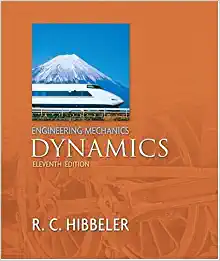If the effects of atmospheric resistance are accounted for, a freely falling body has an acceleration defined
Question:
If the effects of atmospheric resistance are accounted for, a freely falling body has an acceleration defined by the equation a = g(1− cv2), where the positive direction is downward. If the body is released from rest at a very high altitude, determine
(a) The velocity at time t1
(b) The body’s terminal or maximum attainable velocity as t →∞. Given:
Fantastic news! We've Found the answer you've been seeking!
Step by Step Answer:
Related Book For 

Question Posted:





